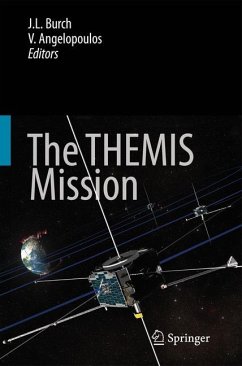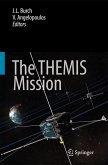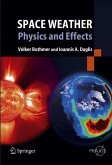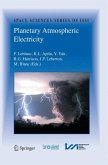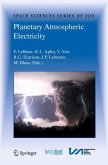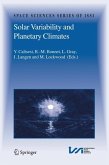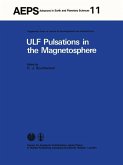The THEMIS mission aims to determine the trigger and large-scale evolution of substorms by employing five identical micro-satellites which line up along the Earth's magnetotail to track the motion of particles, plasma, and waves from one point to another and for the first time, resolve space-time ambiguities in key regions of the magnetosphere on a global scale. The primary goal of THEMIS is to elucidate which magnetotail process is responsible for substorm onset at the region where substorm auroras map: (i) local disruption of the plasma sheet current (current disruption) or (ii) the interaction of the current sheet with the rapid influx of plasma emanating from reconnection. The probes also traverse the radiation belts and the dayside magnetosphere, allowing THEMIS to address additional baseline objectives. This volume describes the mission, the instrumentation, and the data derived from them.
J.L. Burch·V. Angelopoulos Originally published in the journal Space Science Reviews, Volume 141, Nos 1-4, 1-3. DOI: 10.1007/s11214-008-9474-5 © Springer Science+Business Media B.V. 2008 The Earth, like all the other planets, is continuously bombarded by the solar wind, which is variable on many time scales owing to its connection to the activity of the Sun. But the Earth is unique among planets because its atmosphere, magnetic eld, and rotation rates are each signi cant, though not dominant, players in the formation of its magnetosphere and its reaction to solar-wind inputs. An intriguing fact is that no matter what the time scale of solar-wind variations, the Earth's response has a de nite pattern lasting a few hours. Known as a magnetospheric substorm, the response involves a build-up, a crash, and a recovery. The build-up (known as the growth phase) occurs because of an interlinking of the geom- netic eld and the solar-wind magnetic eld known as magnetic reconnection, which leads to storage of increasing amounts of magnetic energy and stress in the tail of the mag- tosphere and lasts about a half hour. The crash (known as the expansion phase) occurs when the increased magnetic energy and stresses are impulsively relieved, the current system that supports the stretched out magnetic tail is diverted into the ionosphere, and bright, dynamic displays of the aurora appear in the upper atmosphere. The expansion and subsequent rec- ery phases result from a second magnetic reconnection event that decouples the solar-wind and geomagnetic elds.
J.L. Burch·V. Angelopoulos Originally published in the journal Space Science Reviews, Volume 141, Nos 1-4, 1-3. DOI: 10.1007/s11214-008-9474-5 © Springer Science+Business Media B.V. 2008 The Earth, like all the other planets, is continuously bombarded by the solar wind, which is variable on many time scales owing to its connection to the activity of the Sun. But the Earth is unique among planets because its atmosphere, magnetic eld, and rotation rates are each signi cant, though not dominant, players in the formation of its magnetosphere and its reaction to solar-wind inputs. An intriguing fact is that no matter what the time scale of solar-wind variations, the Earth's response has a de nite pattern lasting a few hours. Known as a magnetospheric substorm, the response involves a build-up, a crash, and a recovery. The build-up (known as the growth phase) occurs because of an interlinking of the geom- netic eld and the solar-wind magnetic eld known as magnetic reconnection, which leads to storage of increasing amounts of magnetic energy and stress in the tail of the mag- tosphere and lasts about a half hour. The crash (known as the expansion phase) occurs when the increased magnetic energy and stresses are impulsively relieved, the current system that supports the stretched out magnetic tail is diverted into the ionosphere, and bright, dynamic displays of the aurora appear in the upper atmosphere. The expansion and subsequent rec- ery phases result from a second magnetic reconnection event that decouples the solar-wind and geomagnetic elds.

